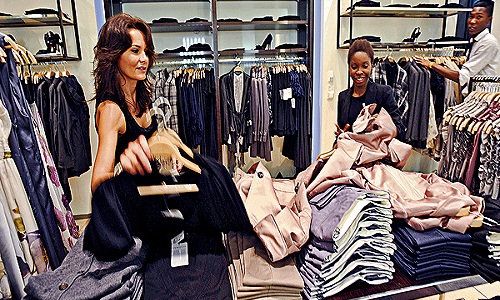"Fashion is responsible for 92 million tons of solid waste dumped in landfills each year. The fashion industry is also the second biggest consumer of water, producing 20 per cent of wastewater while also generating more greenhouse gas emissions than all international flights and maritime shipping combined. The equivalent of one garbage truck of textiles is wasted every second. Around a lakh of marine animals are killed each year by plastic waste, including microfibers. It’s up to apparel brands to take responsibility for the waste they’re creating. Brands need to address head-on the chemicals, use of textiles waste and synthetic fabrics that don’t break down, and unfair working environments in the clothing industry. "
 Fast fashion has been responsible for more collections as well as more consumption, leading to more wastage and global resource consumption. There are an estimated two billion new consumers waiting to buy the latest trends. The average number of clothing collections in Europe more than doubled between 2000 and 2011.
Fast fashion has been responsible for more collections as well as more consumption, leading to more wastage and global resource consumption. There are an estimated two billion new consumers waiting to buy the latest trends. The average number of clothing collections in Europe more than doubled between 2000 and 2011.
Waste and Global Resource Consumption
Fashion is responsible for 92 million tons of solid waste dumped in landfills each year. The fashion industry is also the second biggest consumer of water, producing 20 per cent of wastewater while also generating more greenhouse gas emissions than all international flights and maritime shipping combined.
The equivalent of one garbage truck of textiles is wasted every second.
Around a lakh of marine animals are killed each year by plastic waste, including microfibers. It’s up to apparel brands to take responsibility for the waste they’re creating. Brands need to address head-on the chemicals, use of textiles waste and synthetic fabrics that don’t break down, and unfair working environments in the clothing industry.
brands to take responsibility for the waste they’re creating. Brands need to address head-on the chemicals, use of textiles waste and synthetic fabrics that don’t break down, and unfair working environments in the clothing industry.
What should be done?
The no-waste economy must be applied to fashion, just as it is in the food industry. There is need for action at each stage of the supply chain, starting with sustainable sourcing of fabrics, through to design, exploration of possible alternatives to distribution, and recovery and recycling of clothing.
Poorer countries need to be included in more sustainable manufacturing models so they can produce clothing locally and more sustainably.












